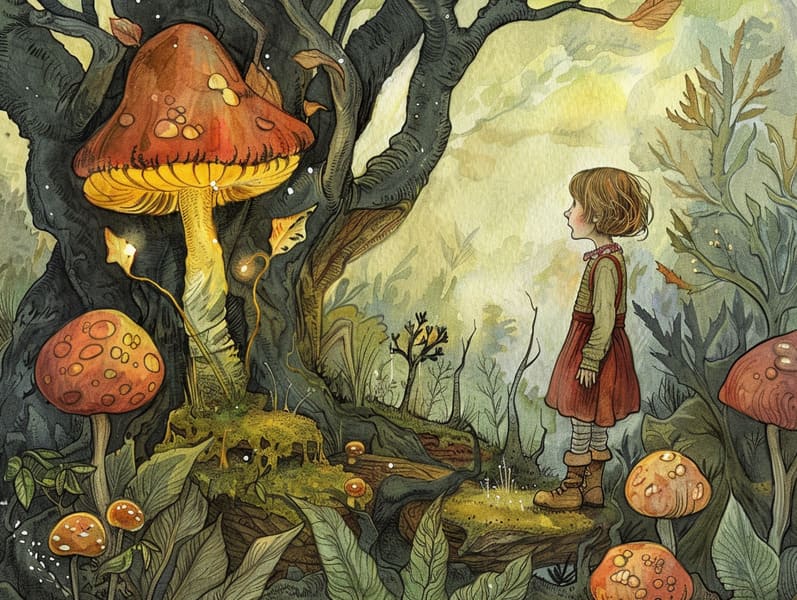Uncovering the Past of Historical Fairy Tales and Its Unfading Splendor.
Uncovering the Past of Historical Fairy Tales and Its Unfading Splendor.
Blog Article

Vintage fairy tales have deep roots. These narratives have been spoken from one generation to the next ages before they were ever published. They originated from a variety of traditions, including Eastern traditions. They were initially shared among adults, often carrying themes and messages reflective of the societal norms and beliefs of the time.
Jacob and Wilhelm Grimm, Jacob and Wilhelm Grimm, were among the first to compile and release many of these beloved tales. Their volume, "Grimm's Fairy Stories," included narratives like "Cinderella," "Hansel and Gretel," and "Little Snow White," which have since become hallmarks in the world of children's fairy tales. Similarly, the Danish author's whimsical narratives, such as "The Sea Maid," and "The Little Duckling," have floated into hearts worldwide, ensuring their place in the pantheon of timeless fairy tales.
Even though they are old, classic fairy tales remain as impactful as ever, especially as kids' bedtime tales. These magical stories are now available in diverse formats, including beautifully illustrated books, fantastical animations, and online storybooks.
Their lasting presence can be connected to several delightful features:
Crucial Morals: Old fairy tales often impart important moral lessons. Tales like "The Wolf and the Liar" teach the merit of truthfulness, while "The Tale of the Tortoise and the Hare" exemplify the benefits of determination and meekness. These narratives offer the young clear distinctions between truth and falsehood, molding their moral compass in a mild yet significant way.
Kindness and Comprehension: Fairy tales frequently illustrate beings facing challenges and problems, prompting audiences to feel with their struggles and boost their triumphs. For instance, "The Story of Beauty and the Beast" points out the importance of appreciating inner worth to comprehend the inner spirit of a character, developing tenderness and comprehension.
Cultural Knowledge: Many ancient fairy tales are saturated in the cultural contexts from which they came. Engaging with these narratives can provide captivating looks into different heritages, developing a sense of cultural respect and acknowledgment.
Fantasy and Imagination: The imaginative elements in ancient fairy tales—talking beasts—enhance children’s innovations. These narratives move readers to fantasy realms, activating inventive ideas and a sense of fascination that endures a lifetime.
Timeless fairy tales are not only alluring but also pedagogical. They serve as fascinating tools in building various cognitive and emotional skills in kids. When old fairy tales are voiced, they develop communication skills by showing new phrases and elaborate sentence structures. This practice also strengthens auditory skills and focus, as young readers hang on every word, anxious to see what happens next.
Furthermore, examining the themes and characters of ancient fairy tales can improve analytical skills and evaluative skills. Young readers are instructed to detect patterns, predict happenings, and catch on to cause and effect. These conversations also encourage little ones convey their thoughts and feelings, enhancing their emotional intelligence.
In today’s technological era, the presence of digital fairy tales has made these narratives more accessible than ever. Online platforms and programs provide vast collections of classic fairy tales that can be looked at or listened through anytime, anywhere. Fairy tales narrated are particularly in demand, supplying an fun way for children to engage with these magical stories. Audiobooks and narrated videos lead characters and settings to life, often supplemented by entrancing soundtracks and tunes that amplify the storytelling experience.
The timeless charm of traditional fairy tales lies in their ability to alter to modern times while maintaining their central values. Contemporary renditions of these stories often integrate more different protagonists and modern settings, making them meaningful to today’s audience. However, the core values of braveness, kindheartedness, and honesty remain unchanged, continuing to impact listeners of all ages.
Classic fairy tales also offer a sense of peace and comprehensibility. They deliver a well-arranged narrative with a distinct beginning, middle, and end, often finishing with the finalization of conflicts and the triumph of honesty over deceit. This uniformity can be comforting for young ones, showcasing a sense of constancy in an dynamic world.
Timeless fairy tales continue to allure and educate new generations, maintaining their attraction and applicability in modern society. As kids' bedtime tales, they put out a perfect blend of fantasy and learning, nourishing moral values, empathy, and creativity. The abundance of online fairy tales and the favor of fairy tales recited ratify that these traditional fairy tales remain acquirable to new generations.
By continuing and distributing these stories, we continue to admire the rich check it out tapestry of mythology and cultural heritage. Whether you are perusing a beautifully illustrated book, experiencing a online collection, or playing an spoken story, the grace of Grimm's fairy tales is always within reach. These fairy tales convey of the unfading spell of tales and its ability to join us across time and space.
Even if you are delving into a artistically illustrated book, accessing a online collection, or playing an read-aloud book, the fascination of timeless fairy tales is always within reach.
These fairy tales highlight of the invariable power of fairy tales and its ability to bind us across eras and regions, creating a bond that captivates and teaches alike.